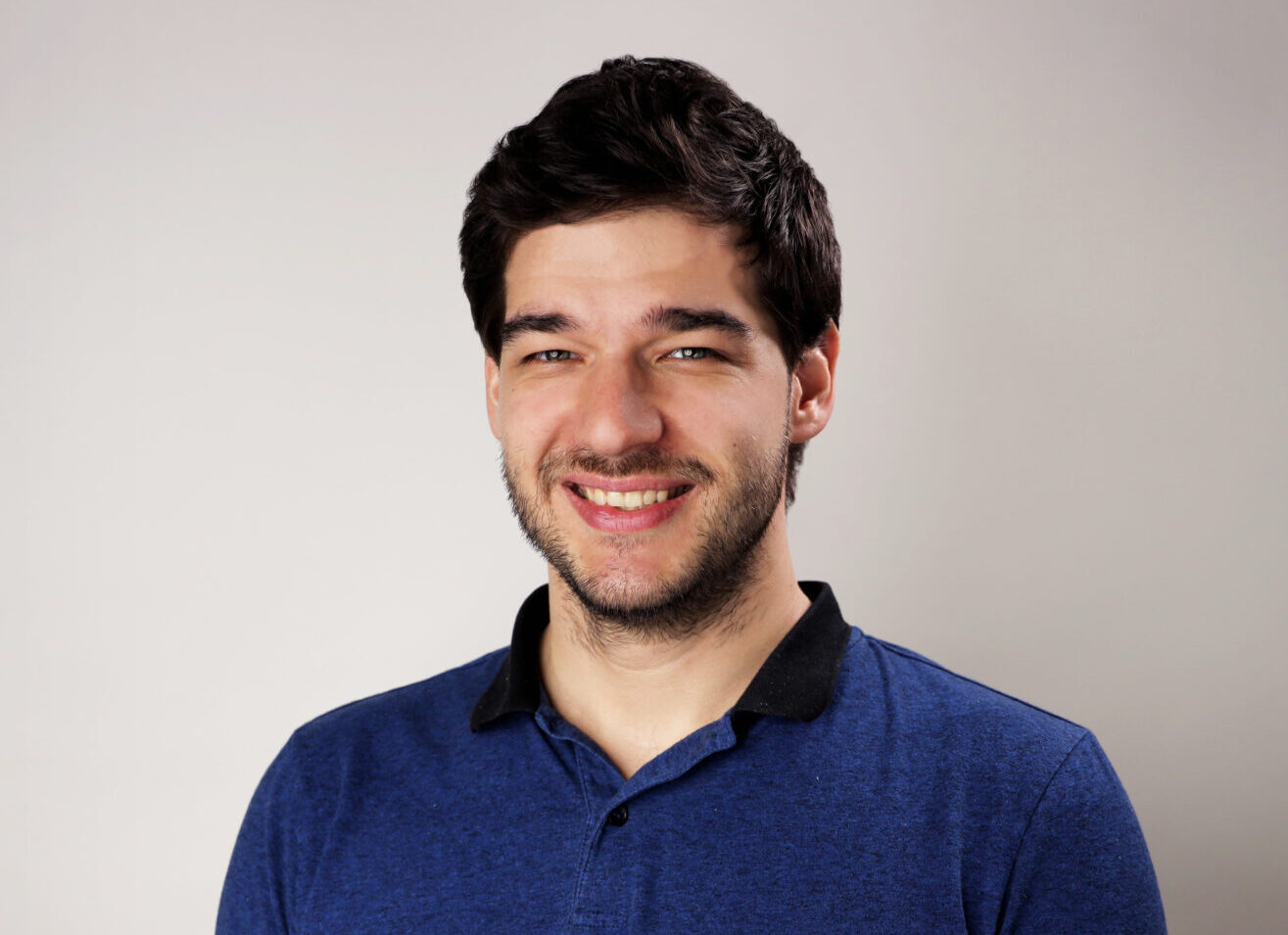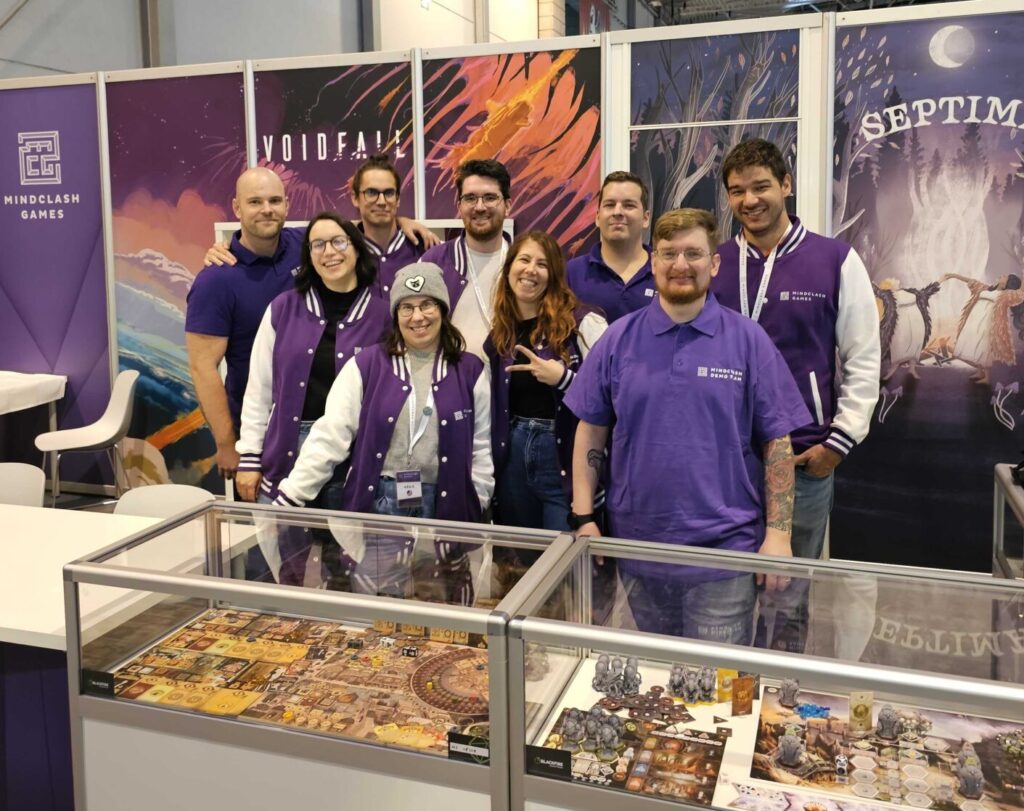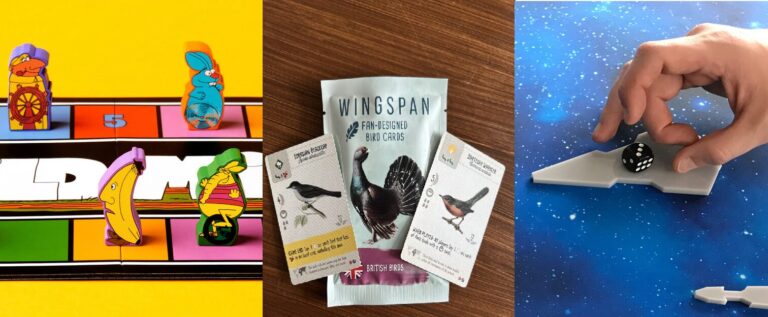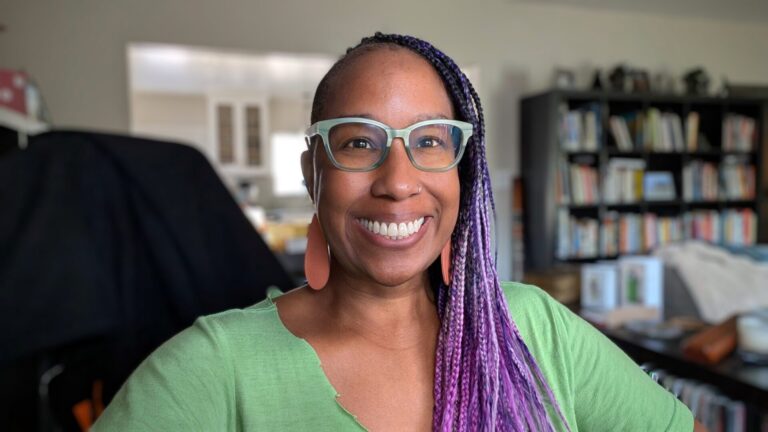
Marketing on BGG “has been very much hit or miss, especially lately”: Mindclash Games’ CEO on effective marketing, crowdfunding’s rocky patch and the ‘smoke and mirrors’ of stretch goals
Mindclash Games has made a name for itself as a Kickstarter-focused heavy board games expert since the launch of debut title Trickerion on the crowdfunding service in 2015. Since then the publisher has hauled in almost $6m across a string of successful campaigns, including more than $1.5m alone for its biggest Kickstarter project, 4x space eurogame Voidfall, in 2021. Fresh from two more strong crowdfunding campaigns for Septima and Perseverance, which raised more than $1.7m between them, Mindclash CEO Viktor Peter spoke to BoardGameWire about the company’s changing approach, its recent use of Gamefound rather than Kickstarter, and how some avenues for marketing its games are not proving as lucrative as in the past.
BoardGameWire: How did your approaches to crowdfunding differ for Voidfall, Septima and Perseverance, compared to each other and your previous campaigns? What was behind the shift to Gamefound?

Mindclash CEO Viktor Peter: Great question, because we did indeed make a shift right before Voidfall towards a more conscious crowdfunding strategy, where we would better adjust to the game’s unique characteristics and the market environment rather than reusing patterns that have been working well. For Voidfall, the focus was on the grand scale and scope that was good for the crowdfunding model back then, as well as the “problem” that Voidfall would solve: that grand 4x games have way too much luck involved to be truly enjoyable for Euro players. Even though the project page is quite sprawling with a lot of content, this has always been at the forefront of our communication when it came to Voidfall, and I believe it very much paid off.
For Septima, our approach was the opposite of that. If I had to sum it up in one sentence, it would be “back to our roots”. We wanted to create a game that’s more accessible both in scope and price, with a cozy, unique-but-familiar setting akin to Trickerion back in our early days. Unlike some of our other games like Cerebria and Perseverance, the theme is also very straightforward and easy to pitch, and the game is probably easier to get into than any of our previous titles. We wanted our campaign to reflect this approach by being as straightforward and focused as possible: we had a single pledge level and a single addon, with the only non-essential extras being the storybook and the tidbits of lore as we unlocked new content, all dedicated to immersing backers into the theme of witchcraft.

Perseverance was once again a whole different story: with its episodic concept of four standalone Eurogames, playable both on their own and as a continuous story, we knew that this game is meant for a more niche audience of veteran Euro enthusiasts, who also have a few crowdfunding pledges under their belt. Gamefound has been doing a good job at rallying these people, and it has been evolving tremendously as a platform throughout 2023, so we decided to pull the trigger and launch there instead of Kickstarter. Even though the first Perseverance campaign of Episodes 1 and 2 was on Kickstarter, we assumed that those people would be easier to reach even if we moved to a new platform, especially since the pledge manager was Gamefound even for the first campaign. While I believe that Kickstarter still has a better organic reach than Gamefound and some games are a better fit to that platform, the backers on Gamefound did seem more involved and committed – for example, we’ve seen way fewer cancellations during the course of the campaign than we did on Kickstarter.
How do you come up with your goal amount, and what were your minimum / maximum expectations going into the campaigns?
I’m not a huge believer of setting a low funding goal and then using “Funded in 3 minutes” or “6,000% funded” in marketing. I’m not saying that there’s anything wrong with it or that it doesn’t work, I simply think the overall funding and the momentum of the project is more important. I also think that there is an increasing number of backers, especially among the more experienced crowdfunders, who value honesty and straightforwardness very much in the campaign, including in the funding goal, so that’s what we’ve been going for in all our recent campaigns. Obviously that’s not our actual target, but over the years we have been getting better and better at estimating the end result of each campaign: the most telling signs are the enthusiasm on conventions and on BGG prior to the launch, the number of pre-campaign followers on the crowdfunding page, and the number (and vibe) of the influencers willing to cover the game.
How important was the pre-launch period for getting a campaign to shine? What strategies did you use to raise awareness, what had the greatest impact, and what didn’t really work this time around?

Even for more established publishers, I think building pre-launch awareness is extremely important – your track record will only get you so far, especially if you are trying something new such as Perseverance. For us, the best method for building pre-campaign buzz is, and has always been, convention presence. We create physical prototypes and present them at conventions at a fairly early stage (earlier than most other publishers, I’d say), which is great not only for exposure, but also for early feedback. Sure, the game is not as polished at this stage, but that never really backfired – people usually acknowledge that they are playing a work-in-progress game and are often thankful and excited about the opportunity. Another big thing is designer diaries on BGG – especially for deeper, more involved games, these are quite popular among our players. We usually do very little paid promotion prior to the campaign and rely on organic methods and mobilizing as much of our fan base as possible, but I can easily see that changing in the future.
Did you try anything new for PR/marketing across these campaigns compared to previous Kickstarters? Again, what worked, and what didn’t?
Not really, no – we simply went with the pretty standard trio of sponsored previews, BGG contests and Facebook ads, with the latter having been outsourced to third-party marketing agencies (or to Gamefound, in the case of Perseverance). Frankly, this is an area where I think we could improve and innovate going forward: Facebook ads have always been working decently well, but BGG has been very much hit or miss, especially lately. I’ve also been feeling that people are becoming a bit apathetic towards sponsored Kickstarter preview videos – actual reviews with a strong opinion tend to generate much more views, but those are understandably very hard to get for crowdfunding campaigns, given that the game isn’t ready yet. We have been exploring new platforms to advertise at, such as TikTok, and will continue to do so.
What was your strategy with stretch goals and add-ons for these campaigns, and do you think they had a positive impact? Would you approach them differently if you were to run the campaigns again?
One thing that was common in all three projects was the fact that we’ve moved away from traditional funding-based stretch goals. I still believe that new content unlocks are essential to keeping up the momentum and engagement during the campaign – something that’s getting increasingly difficult. But, I think funding-based stretch goals are largely perceived as “smoke and mirrors” by veteran backers (a large part of our audience), assuming that they are just parts of the core game artificially removed and added back in as a marketing gimmick. Instead, we are going with periodic unlocks, usually backed with story elements. This achieves the goal of keeping up the excitement during the campaign while being way less divisive – not to mention it is a lot easier to manage a campaign where you get to set the pace of new content unlocks yourself. That said, I’m not saying that we’ll never ever use stretch goals again, it was just not a great fit for our past few projects.
Knowing what you know now, what else might you have approached differently either before or during the campaigns?
Overall, we are very happy with the performance of all of our recent campaigns, but if I had to name something, it would probably be to better emphasize that Voidfall is more of an Euro than a space 4x – I think that would have helped it find the right audience even better than it did. Oh, and I’d love to peek into a parallel universe, where we published Perseverance as one Episode at a time – we have spent countless hours debating this!
How would you describe the general consumer appetite for crowdfunded games currently, and how have you seen that change over time? Is the crowdfunding market becoming more competitive?
I think that the last two to three years or so have been pretty rough for crowdfunding in general, especially for less established companies. With project costs (especially of shipping) having skyrocketed in 2021/2022 due to the worldwide logistics chaos following Covid, quite a few publishers had to ask for additional funding, or delivered the game with a huge delay (or not at all). This undermined the trust in crowdfunding a bit, and turned even some of the more enthusiastic backers towards the safety of buying games straight from retail. The crowdfunding scene is still quite competitive, yes, but now I feel that creators are also competing with the retail market more than before.
In addition to that, I’ve noticed a trend of several superbackers being quite vocal on social media about cutting down on their pledging drastically and even selling some of their collection. Besides disposable income, shelf space is also a limited resource when it comes to collecting board games, and I think that sprawling big box games with tons of expansions and addons aren’t as appealing to backers as they used to be.
That’s not to say that the time for big crowdfunding hits has passed (just look at Nemesis or Kelp from the recent months), but even more than before, the emphasis shifted towards larger, more established companies with bigger ad budgets and a proven track record.

How about post-campaign production and fulfillment – are the manufacturing delays and supply chain problems post-Covid now over, or are they still having an impact?
Yes, global logistics seems to be back on track, and I do hope that this statement will age well. We’ll never be back to pre-Covid prices ever again, but the nightmare of paying $18,000 for a shipping container is over for quite a few months now. Manufacturing costs have also normalized, at least in China, party due to the increasingly competitive manufacturer landscape there.
However, the post-Covid events did teach us to expect the unexpected even more than before if you’re budgeting for a project that will take a year to deliver. We are doing our best to plan our project finances very meticulously, and with a bigger safety cushion than before.
What are your essential tips for anyone about to launch their own board game crowdfunding campaign?
Talk about your game as much as possible. Be part of the community, launch a BoardGameGeek page early, create content, answer questions, and form opinions. Having a great game is a good start, but a visibly engaged and enthusiastic creator behind it will help a lot in building up the confidence and trust required for a successful launch.
Have as many people try your game as possible. If you have the opportunity, go to a convention or two (renting even the smallest booth is usually worth the investment), but just organizing a few game nights in your local community or game store can help jumpstart the conversation about your game – not to mention getting you some valuable early feedback.
Finally, invest in art – if nothing else, present an eye-catching cover art when you first present or announce your game online. A good artist isn’t cheap, but with the amount of games published each year, good art is the best way to grab the attention of people and get them to take a close look.






